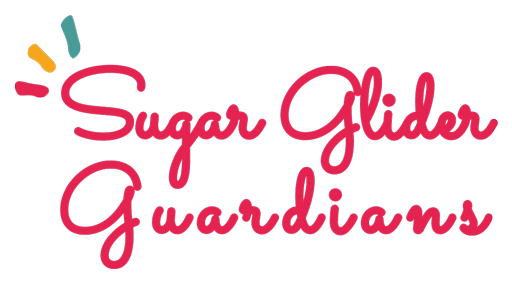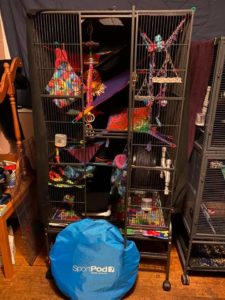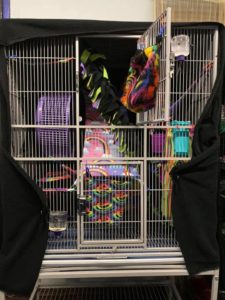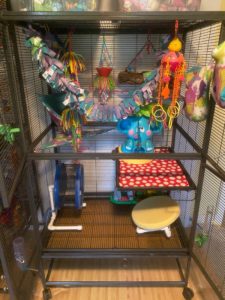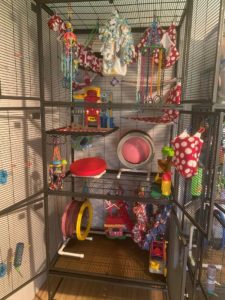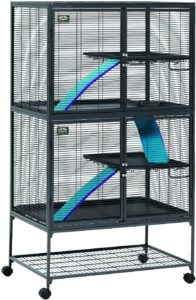Cage Setup
TIPS REGARDING ENCLOSURES
- Sugar gliders require relatively large enclosures. They are nocturnal, and in the enclosure is where they will likely spend most of their waking hours. Therefore, they need to have adequate space and stimulation.
- Bar spacing on cages should not be larger than .5 inches. Bars that are spaced further apart than this will allow gliders to slip through and escape. Because of this, most ferret cages will not be suitable for gliders
- Many accidental glider deaths happen because gliders escape the cage. Buy a high quality cage.
- Doors that slide up and/or do not latch need to be fastened closed. We recommend plastic zip ties for this. If they are not fastened, gliders can escape.
- Cage doors are very important. You want a cage with doors that are large enough to fit large objects in them, and that allow you to easily reach all parts of the cage when they are open.
- Choose an enclosure that is easy to clean. Pay attention to door size. A cage with large doors will be provide a much easier ownership experience than small doors.
- Purchase a cage that has bars on the top also. You will want to hang items from the top of your cage – a cage with a solid metal or plastic roof is not ideal.
- Cage covers can help a lot with bonding and temperament in gliders. Covering the top, back, and sides, but leaving the front open, helps the gliders to feel more secure. We recommend a fleece cage cover or simply draping fleece fabric over the cage.
